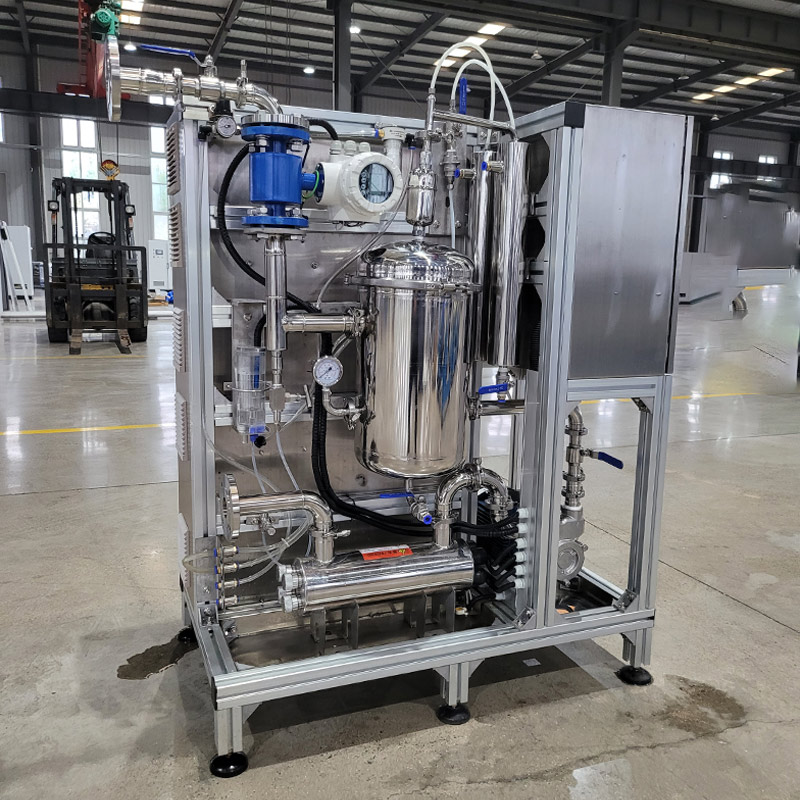Application of Ozone in Semiconductor CVD Process
Chemical vapor deposition is one of the most widely used techniques in the semiconductor industry for depositing various materials
Including insulation materials, most metal materials, and metal alloy materials.
In short, it is the process of introducing two or more gaseous raw materials into a reaction chamber, where a chemical reaction occurs to deposit a new material on the surface of the crystal.
But in fact, the reactions that occur in the reaction chamber are very complex and limited by various conditions. Such as gas flow rate, ratio, pressure, temperature, distance between cathode and anode, or whether there are additional energy sources such as plasma energy and bias voltage.
CVD technology is classified by reaction type or pressure, including low-pressure CVD (LPCVD), atmospheric pressure CVD (APCVD), sub atmospheric pressure CVD (SACVD), ultra-high vacuum CVD (UHCVD), plasma enhanced CVD (PECVD), high-density plasma CVD (HDPCVD), and fast thermal CVD (RTCVD), metal opportunity CVD (MOCVD), etc.
Ozone, due to its strong oxidation ability, is often used to provide oxygen as one of the reactants, which combines with different chemical materials to form glass deposition
TEOS+O3→SiO2 USG,undoped silicon galss
TEPO+TEOS+O3 → PSG phosphorus doped glass
TEB+TEPO+TEOS+O3 → BPSG borophosphate glass
TEB and TEPO can also be replaced by TMB TMP, both of which are silicon-based organic lipids containing boron or phosphorus
Some factories also use its oxidizing properties to achieve wet treatment processes through acid tanks (Wet Bench), but this year it has been replaced by hydrogen peroxide due to its stability and the complexity of the control system.
Taking the SACVD system as an example, atmospheric pressure CVD (SACVD) is used for chemical reactions. The pressure in the reaction chamber often reaches 200 Torr or even above 600 Torr, so it is named sub atmospheric pressure CVD(Sub-Atomspheric Chemiacl Vapor Deposition)。
Formed by the reaction of tetraethyl orthosilicate (TEOS) and ozone directly applied at a certain temperature (commonly 400 ° C or 480 ° C) and pressure (commonly 450 Torr or 200 Torr)
TEOS is liquid at room temperature and requires a carrier such as helium gas to be pushed to a specific liquid to gas conversion device (such as an injection valve or a bubbler tank) at a low pressure and heated to around 110 degrees Celsius, and then passed through a precise liquid flow meter/mass flow controller into the reaction chamber.
The high-purity oxygen supplied by the factory management system is metered by MFC and then passed into the ozone generator. The ratio of adding a small amount of nitrogen gas will directly affect the chemical reaction process in the reaction chamber, so the concentration of ozone is crucial. Due to the instability of ozone (oxygen atoms can separate and recombine back into oxygen molecules at any time), the ozone generator must maintain a stable working state to obtain a stable concentration of ozone mixture. The pressure at the gas inlet and outlet, as well as the temperature of the generator, need to be strictly controlled. For example, to apply accurate temperature control, a chiller is needed to control the heat exchange process in the generator chamber.
The ozone generated by the ozone generator is generally about 13% in O2/O3 mixer. In order to achieve online monitoring, the application of ozone detectors has been introduced.
By using a diversion tube at the outlet of an ozone generator and sampling through a spectrometer with a quartz window, a specific spectrum can be obtained by transmitting ultraviolet light of a certain wavelength through the gas, thereby verifying the mass content of ozone in the gas.
In standby mode, ozone mixture continuously enters the bypass valve and then merges with the bypass gas used by the online ozone detector. The flow passes through the tail gas decomposition device O3 destroyer (a honeycomb filtration device containing manganese dioxide) to promote the degradation of ozone into oxygen, which is discharged into the general process exhaust pipeline.
When ozone is required for the process reaction, the bypass valve Diver valve will be controlled by an electromagnetic valve to switch to the side leading to the reaction chamber, guiding the mixer to participate in the reaction. The remaining gas from the reaction will pass through the process vacuum pump along with other reaction by-products, and then be treated for tail gas by the central scrubbing tower.
In order to ensure the processing efficiency of the exhaust gas separation device 03 destroyer, an online residual ozone low concentration detector can be installed. The common ultraviolet absorption method (Bilombo's law) uses characteristic wavelength ultraviolet light to irradiate the detected gas, and the obtained signal is converted and compared to ensure the safety of the exhaust gas emitted to the general exhaust.
Due to different reaction conditions, the required hardware equipment also varies accordingly. SACVD can be roughly divided into
1. Mainframe (MAINFRAME)
2. Electrical control cabinet (Controller)
3. Process Chamber
4. Gas control cabinet (GASPANEL)
5. Auxiliary equipment: heat exchanger, ozone generator, vacuum pump, etc.





